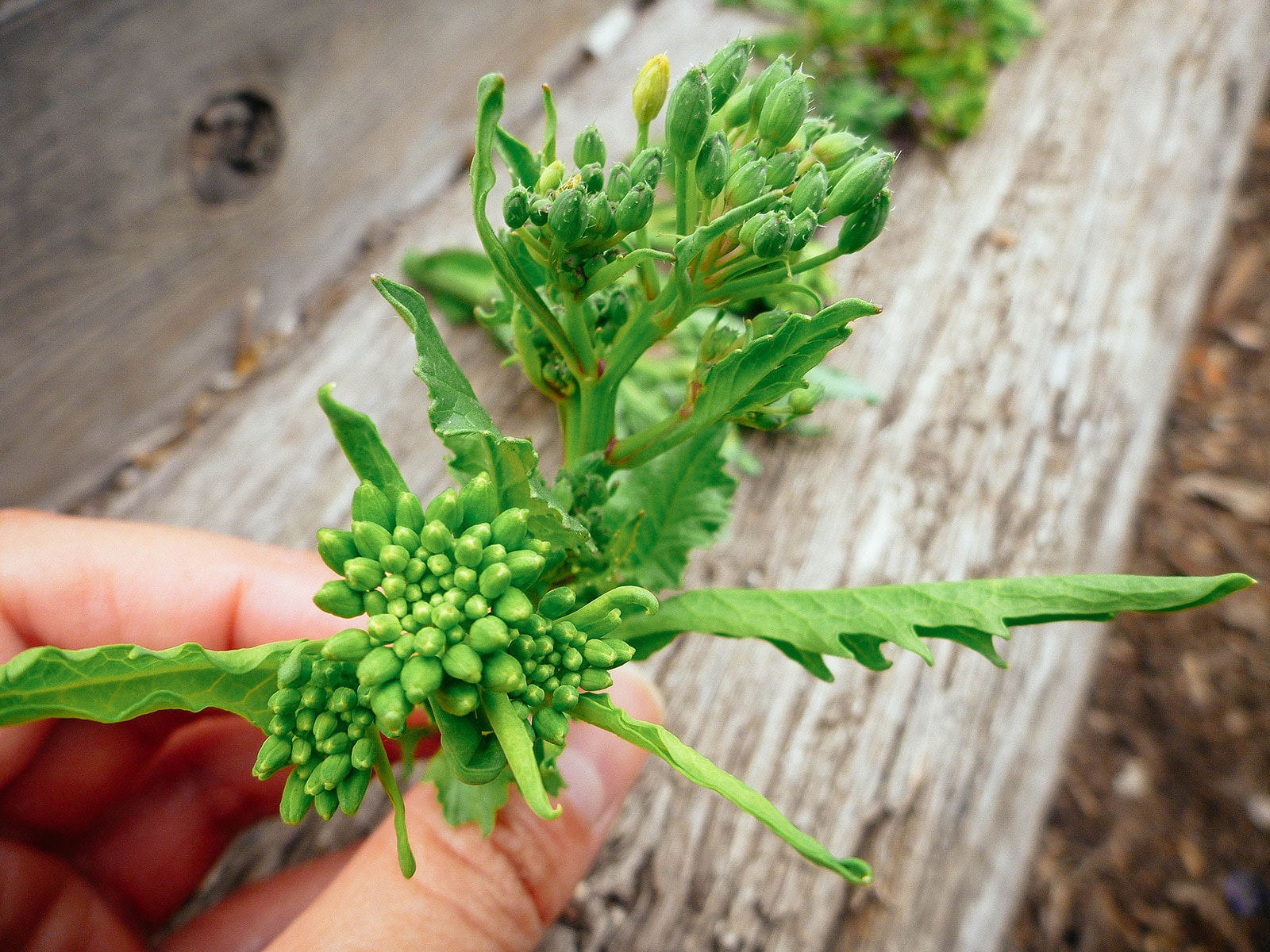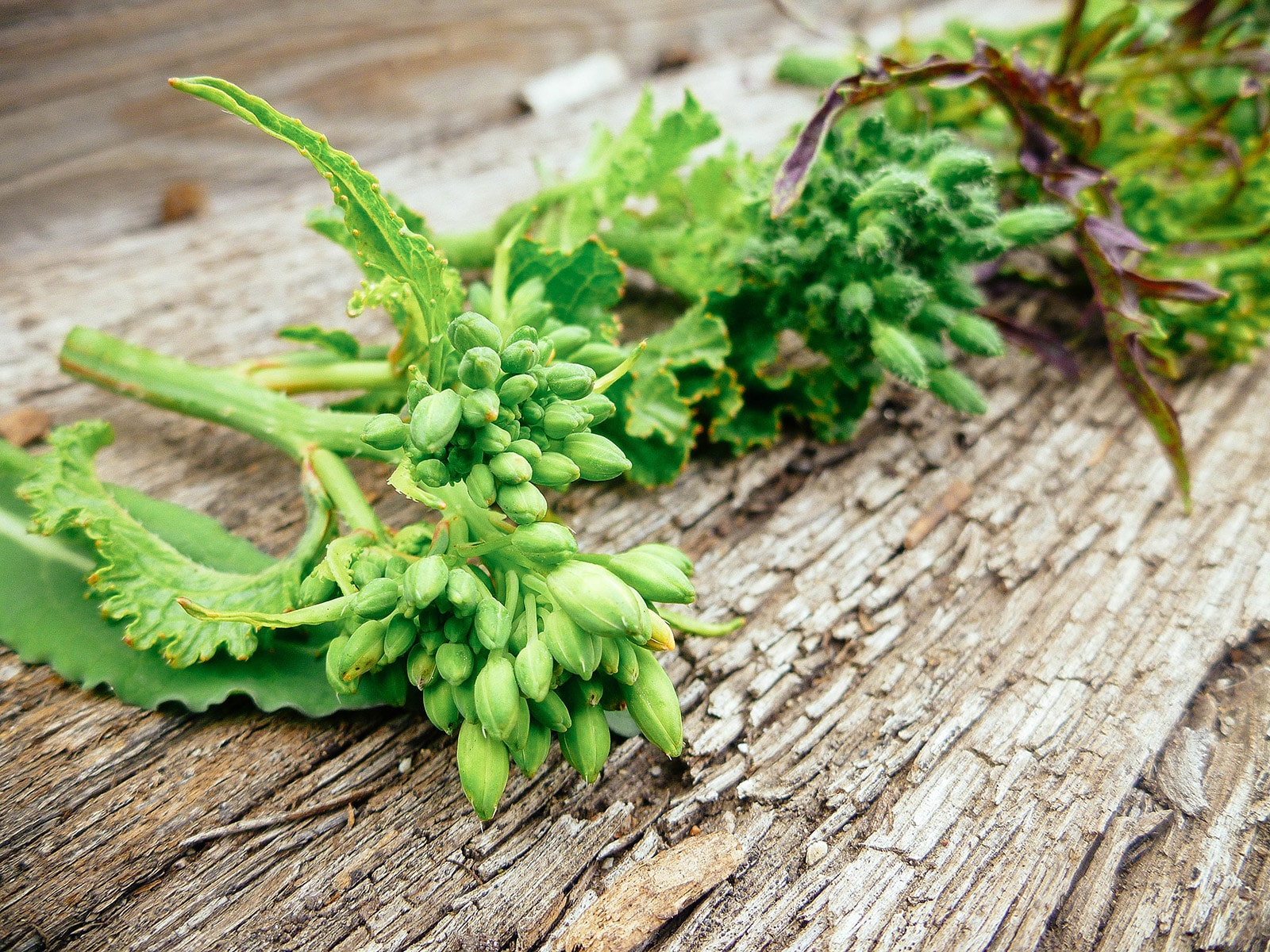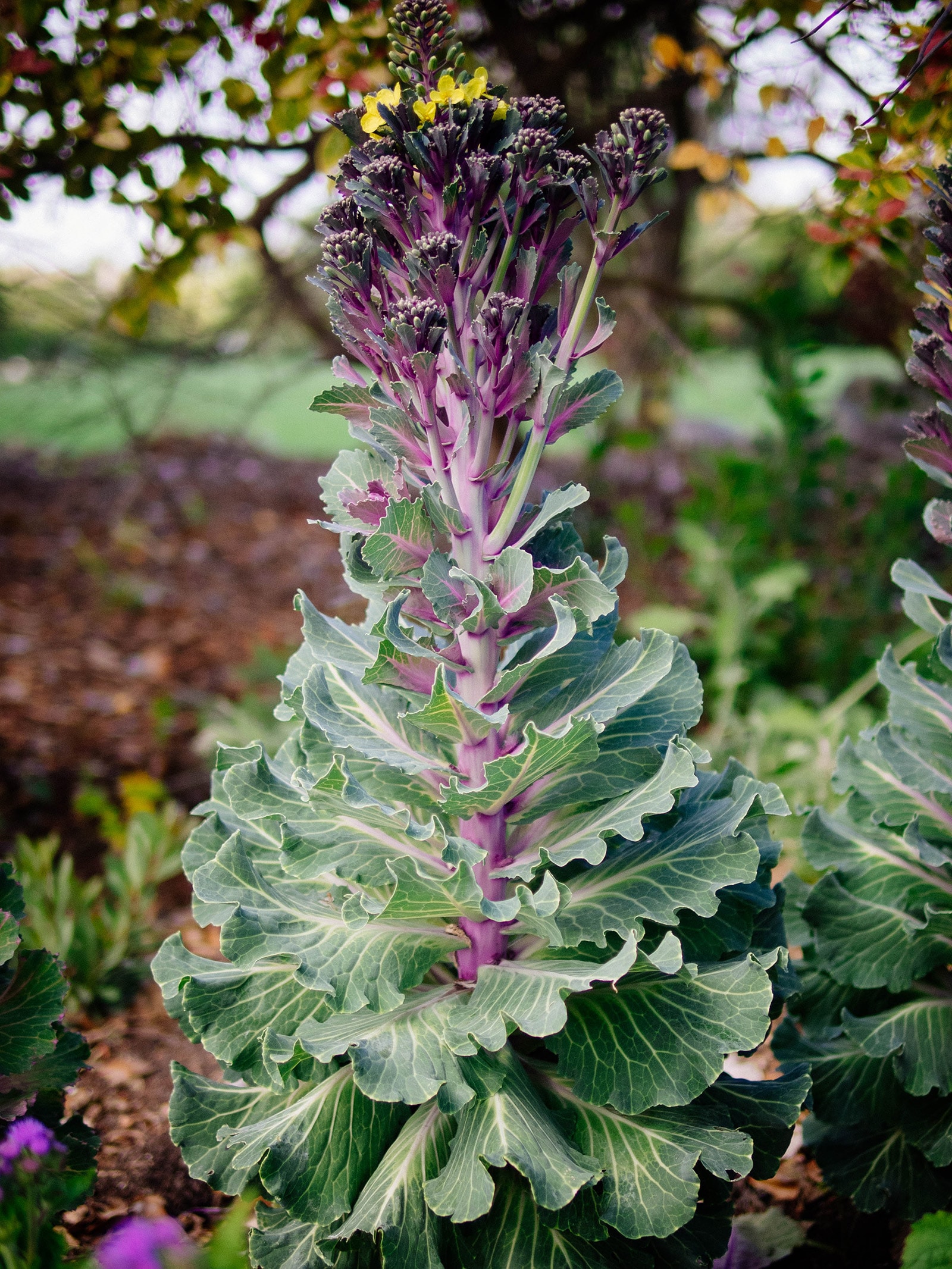Ornamental Kale Is Rich in Nutrients
The leaves of this plant are not only healthy, but also safe to eat.
Similar to other culinary varieties like “Lacinato,” “Russian Red,” curly-leafed, and others, the ornamental variety is a good source of calcium, vitamins A, C, and K, as well as other antioxidants.
In fact, a study published in the journal BMC Genomics found that those bright splashes of pink and purple are due to compounds called anthocyanins.
Anthocyanins are pigments with strong antioxidant properties that are also present in blueberries and purple carrots.
A review published in the journal Nutrients found that diets rich in anthocyanins are associated with a reduction in inflammation, obesity, and obesity-related chronic diseases.
Can you really eat kale flowers?
Yes, and if you didn’t, you’d be missing out on a culinary treat!
If you find the idea of eating kale flowers strange, it’s likely that you’ve cooked with other types of brassica buds without even realizing it.
The term “raab,” which comes from the Italian word “rapa,” “turnip,” refers to the flowering tops of plants in the brassica family, including kale, broccoli, mustard greens, and Chinese cabbage.
In supermarkets, broccoli raab (also known as rapini) is sold as bundles of stems with compact clusters of flower buds, some of which have tiny yellow blossoms. Gailan, also known as Chinese broccoli, is a common ingredient in dishes that include these tiny flower buds. It can be found in specialty and Asian markets.


And did you know that the actual head of broccoli or cauliflower is just the plant’s flower bud?
Compared to other Brassica oleracea cultivars, broccoli and cauliflower were bred to produce massive amounts of flowers. This “unusual” part is actually more common than you might think because the “heads,” or florets, are simply oversized versions of what should actually be called broccoli buds and cauliflower buds.
Therefore, you might be wondering why kale florets are never sold.
Demand and the fact that eating kale florets has never been a staple of American cuisine are the only factors at play here. (Weird, but true. ).
Due to the fact that consumers prefer to purchase kale for its leaves rather than its flowers, farmers must switch to other crops before the kale has a chance to flower. The majority of people never get to enjoy this extra harvest at the end of the season, but if you grow your own kale at home, you do!

Your subscription makes our work possible.
We want to bridge divides to reach everyone.
Two vibrant stars of the fall garden are flowering kale and cabbage, also known as ornamental cabbage and kale. Although you can eat them, they are primarily grown for their attractive leaves.
Flowering kale and cabbage, also known as ornamental kale and cabbage, are edible, but you probably won’t want to. They should be placed in garden beds, borders, or containers so they can “bloom” all through the winter.
Of course, the bloom is not a flower but rather a rosette of central leaves that change color as the temperature drops from green to white, pink, purple, and almost red as they lose their chlorophyll.
It’s not too late to install a plant in a pot on your doorstep — flowering kales and cabbages love cold weather, and temperatures down to 20 degrees F or so (minus 7 degrees C). Gardeners in warm regions can grow ornamental kales and cabbages throughout winter.
